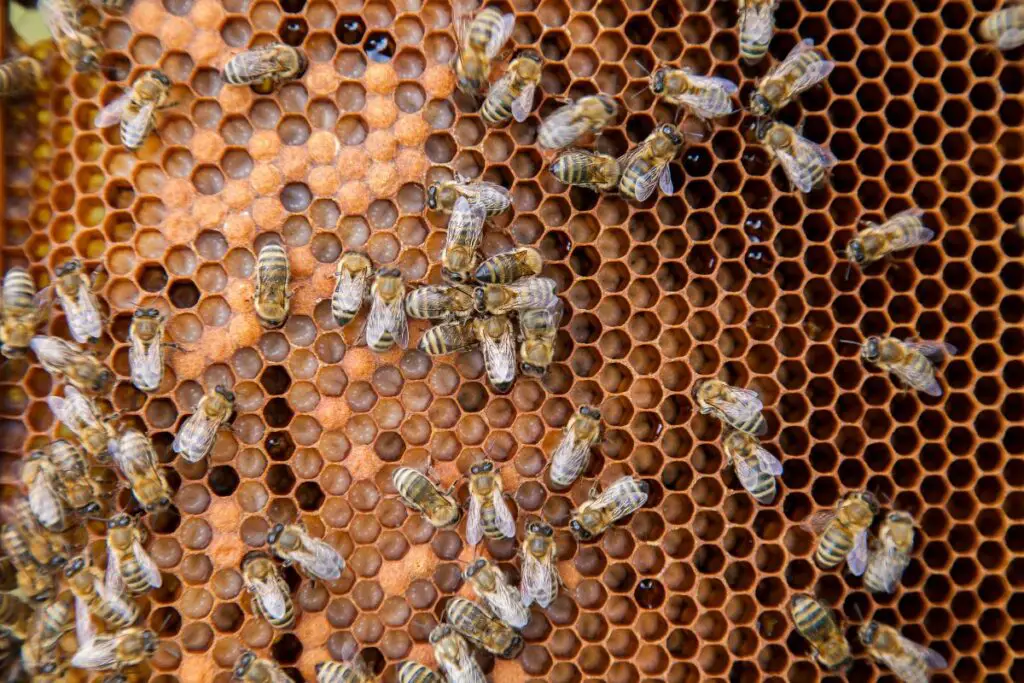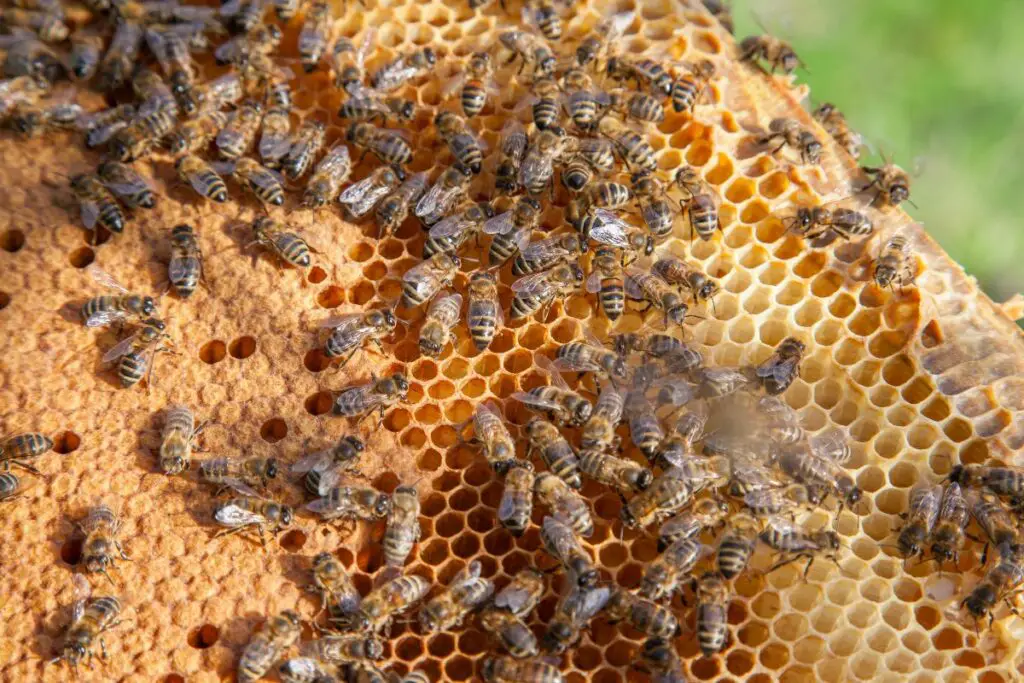Nurse bees are young female honeybees tasked with caring for the eggs and feeding the young larvae in the hive.
It’s one of several roles a worker bee will carry out, essential for the next generation’s success.
From brood to bee, we look at nurse bees’ fascinating role in a honey bee colony.
The Lifecycle Of A Nurse Bee
The transformation from larvae to nurse bees is a fascinating phase in a honey bee’s life.
Initially, these bees start as eggs, which then hatch into larvae. Fed by older nurse bees, they undergo a rapid growth phase, moulting several times before metamorphosing into pupae.
This metamorphosis culminates in their emergence as young adult bees, ready to take on the role of nurse bees within the hive.
The duration of the nurse bee phase normally lasts about two weeks. These young bees dedicate themselves to feeding and caring for the brood during this time.
What Do Nurse Bees Do Inside The Hive?
We can break down responsibilities into three key areas.
Feeding larvae
Nurse bees exhibit a remarkable nurturing instinct when it comes to feeding larvae.
These specialized bees, usually between 3 to 12 days old, secrete royal jelly, a nutrient-rich substance crucial for larval growth, from their hypopharyngeal glands.
They meticulously feed each larva daily, ensuring the developing bees receive adequate nutrition for healthy growth.
Royal jelly plays a pivotal role in larvae development, especially in determining the future role of each bee.
While all larvae receive royal jelly initially, only those destined to become queens continue to receive it exclusively.
This diet triggers the development of queen morphology, including the ability to lay eggs.
For worker bees, the transition to a diet of honey and pollen results in non-reproductive development, ensuring only the queen can lay eggs.
A well-nourished larval population leads to a robust, productive hive.
Inadequate feeding can result in weaker bees, reducing the colony’s ability to perform essential tasks like foraging, defending the hive, and caring for the next generation of bees.

Temperature regulation
Bees exhibit an astonishing ability to regulate the temperature within their hive.
They maintain a consistent temperature by clustering around the brood to warm them or by fanning their wings to circulate air and cool the area.
This precision in temperature control gives the developing larvae a stable environment for proper growth (32°C to 35°C).
Housekeeping
Hygiene is paramount in maintaining a healthy hive. Bees are fastidious cleaners, constantly grooming themselves and each other to remove dust and parasites.
They meticulously clean the hive, removing debris and dead bees to prevent disease spread.
All this hard work is a crucial defence against all sorts of diseases and parasites that can harm the hive.
Bees have an incredible ability to detect and address health issues within their community.
Worker bees, especially the nurse bees, inspect each brood cell. They can identify larvae that are sick or infected by parasites.
They uncap these cells, and the unhealthy larvae are promptly removed, preventing the spread of diseases like American Foulbrood or infestations by the Varroa mite.
Caring for the queen
Nurse bees are the dedicated caretakers of the queen, the only bee in the hive that lays eggs.
They attend to her every need, feeding, grooming, and disposing of her waste.
This constant attention ensures that the queen can focus on her vital role of laying eggs.
What’s Next For Nurse Bees?
Honey bees exhibit remarkable versatility and adaptability in their roles throughout their lives.
As nurse bees, young worker bees, typically between 3 and 12 days old, undertake the critical task of caring for the brood.
They feed and tend to the larvae, keeping them warm and safe.
But these bees transition to other roles as they age. Foragers, usually bees older than three weeks, venture out to collect nectar, pollen, and water, which is crucial for the colony’s sustenance and honey production.
Guards protect the bees in a hive from intruders and threats.
Some of the more skilled, mature foragers may even become scout bees, leading the swarm in search of a new home.
This age-based division of labour showcases the honey bee’s dynamic and communal approach to hive survival and prosperity.




